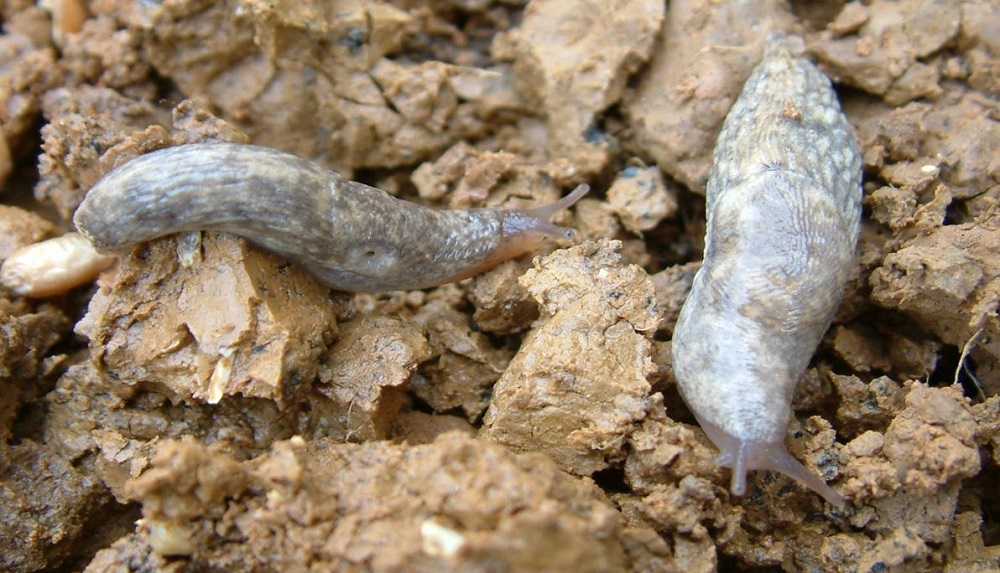Please click here to access the main AHDB website and other sectors.
- Home
- Knowledge library
- What conditions favour slugs?
What conditions favour slugs?
With each slug capable of producing up to 500 eggs, these molluscs are egg-laying machines. By understanding the environmental factors that influence slug activity, it is possible to target control more effectively.
How to manage slugs in field crops (home page)
Order a printed copy of our integrated slug control publication
Although the size of a slug population matters, the activity of the population determines the risk to crops. Activity, survival and reproduction are dependent on temperature, moisture, soil type, food sources and shelter.
How temperature and moisture affect slug populations
Slugs grow and reproduce more rapidly when it is mild and moist. Such conditions prevail in the spring and early autumn, making many crops more vulnerable at these times of year.
The optimum temperature for slugs is 17°C. However, slugs are active between 5°C and 20°C, with the grey field slug even active when temperatures are close to freezing.
Crops grown under fleece, nets or polythene covers provide warm, damp and, occasionally, weedy conditions favourable for slugs. Irrigating crops after planting also results in a conducive environment for slug activity.
Eggs develop slowly in the winter but hatch within a few weeks when the temperature starts to rise.
As slugs prefer to avoid hot, dry conditions, most movement occurs at night. When conditions are unfavourable, slugs tend to return to their damp resting sites.
How soil/field conditions affect slug populations
Slugs are most abundant in heavy soils with high clay or silt content, with open, cloddy seedbeds allowing easy movement.
Crop residues or applications of organic/matter manure, especially in the autumn, as well as weeds and volunteers, provide slugs with a source of food and shelter.
Slug damage is greater after leafy crops that create moist soil conditions. New plantings following crops that have a long growing period are more susceptible.
Direct drilling, as well as delayed drilling, increases the risk of slug damage. Crops grown on friable, frequently cultivated soils are less prone to this pest.
The risk of damage increases on the field’s perimeters. Headlands are close to field boundary vegetation and are often compacted, with poor drainage. This can create a moist refuge for slugs. As a result, smaller fields are often more prone to slugs.


